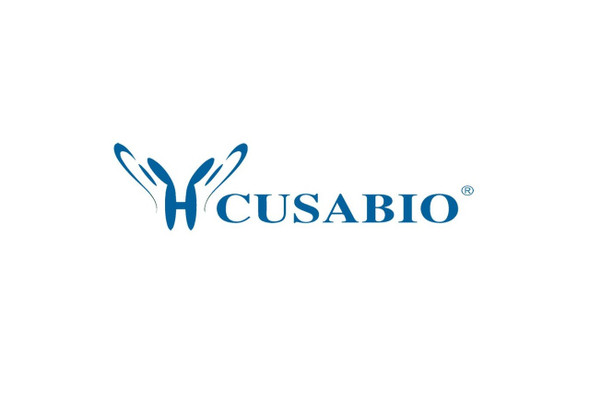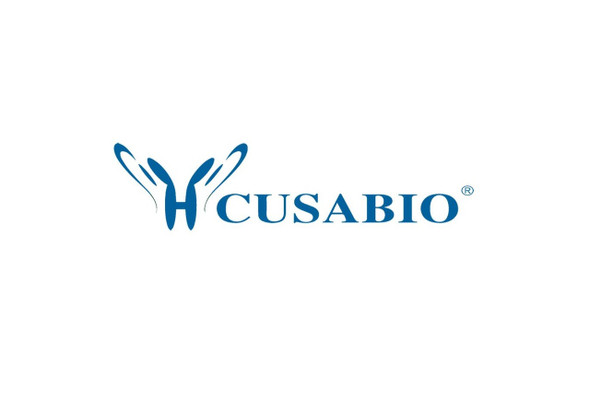Cusabio Active Proteins
Recombinant Human Tumor necrosis factor receptor superfamily member 10B (TNFRSF10B), partial (Active) | CSB-AP004921HU
- SKU:
- CSB-AP004921HU
- Availability:
- 5 to 10 Working Days
Description
Recombinant Human Tumor necrosis factor receptor superfamily member 10B (TNFRSF10B) ,partial (Active) | CSB-AP004921HU | Cusabio
Protein Description: Partial
Alternative Name (s) : Tumor Necrosis Factor Receptor Superfamily Member 10B; Death Receptor 5; TNF-Related Apoptosis-Inducing Ligand Receptor 2; TRAIL Receptor 2; TRAIL-R2; CD262; TNFRSF10B; DR5; KILLER; TRAILR2; TRICK2; ZTNFR9
Gene Names: TNFRSF10B
Research Areas: Cancer
Species: Homo sapiens (Human)
Source: Mammalian cell
Tag Info: C-terminal 6xHis-Fc-tagged
Expression Region: 56-182aa
Sequence Info: ITQQDLAPQQRAAPQQKRSSPSEGLCPPGHHISEDGRDCISCKYGQDYSTHWNDLLFCLRCTRCDSGEVELSPCTTTRNTVCQCEEGTFREEDSPEMCRKCRTGCPRGMVKVGDCTPWSDIECVHKE
Biological Activity: The ED50 as determined by its ability to inhibit TRAIL-mediated cytotoxicity using L‑929 mouse fibroblast cells treated with TRAIL is typically 23 ng/mL.
MW: 42.2 kDa
Purity: Greater than 95% as determined by SDS-PAGE.
Endotoxin: Less than 1.0 EU/µg as determined by LAL method.
Relevance: TNFRSF10B is a member of the TNF-receptor superfamily, and contains an intracellular death domain. This receptor can be activated by tumor necrosis factor-related apoptosis inducing ligand (TNFSF10/TRAIL/APO-2L) , and transduces apoptosis signal. The adapter molecule FADD recruits caspase-8 to the activated receptor and is required for the apoptosis mediated by TNFRSF10B. TNFRSF10B is expressed in a number of cell types, and to particularly high levels in lymphocytes and spleen. This single-pass transmembrane protein contains two cysteine-rich repeat units in its extracellular region, followed by a transmembrane segment and a cytoplasmic tail containing a typical “death domain”. TNFRSF10B expression is regulated by the tumor suppressor p53. It is also indicated that the activation of NF-kappa-B can be promoted by TNFRSF10B.
PubMed ID:
Notes: Repeated freezing and thawing is not recommended. Store working aliquots at 4℃ for up to one week.
Function: Receptor for the cytotoxic ligand TNFSF10/TRAIL
Involvement in disease: Squamous cell carcinoma of the head and neck (HNSCC)
Subcellular Location: Membrane, Single-pass type I membrane protein
Protein Families:
Tissue Specificity: Widely expressed in adult and fetal tissues; very highly expressed in tumor cell lines such as HeLaS3, K-562, HL-60, SW480, A-549 and G-361; highly expressed in heart, peripheral blood lymphocytes, liver, pancreas, spleen, thymus, prostate, ovary, uterus, placenta, testis, esophagus, stomach and throughout the intestinal tract; not detectable in brain.
Paythway: p53signalingpathway
Form: Lyophilized powder
Buffer: Lyophilized from a 0.2 μm filtered 20 mM PB, 150 mM NaCl, pH 7.4
Reconstitution: We recommend that this vial be briefly centrifuged prior to opening to bring the contents to the bottom. Please reconstitute protein in deionized sterile water to a concentration of 0.1-1.0 mg/mL.We recommend to add 5-50% of glycerol (final concentration) and aliquot for long-term storage at -20℃/-80℃. Our default final concentration of glycerol is 50%. Customers could use it as reference.
Uniprot ID: O14763
Uniprot Entry Name:
HGNC Database Link: HGNC
UniGene Database Link: UniGene
KEGG Database Link: KEGG
STRING Database Link: STRING
OMIM Database Link: OMIM









